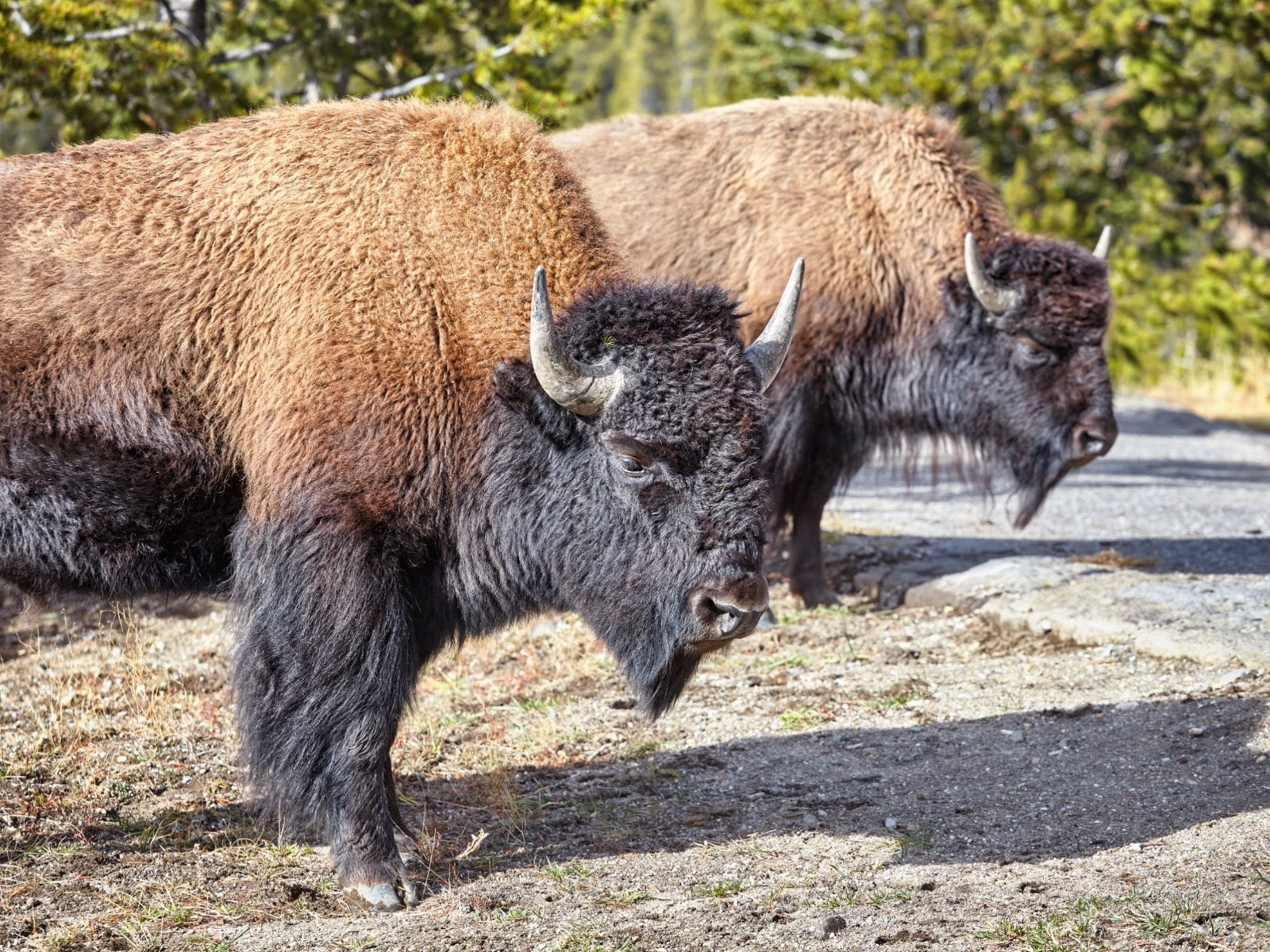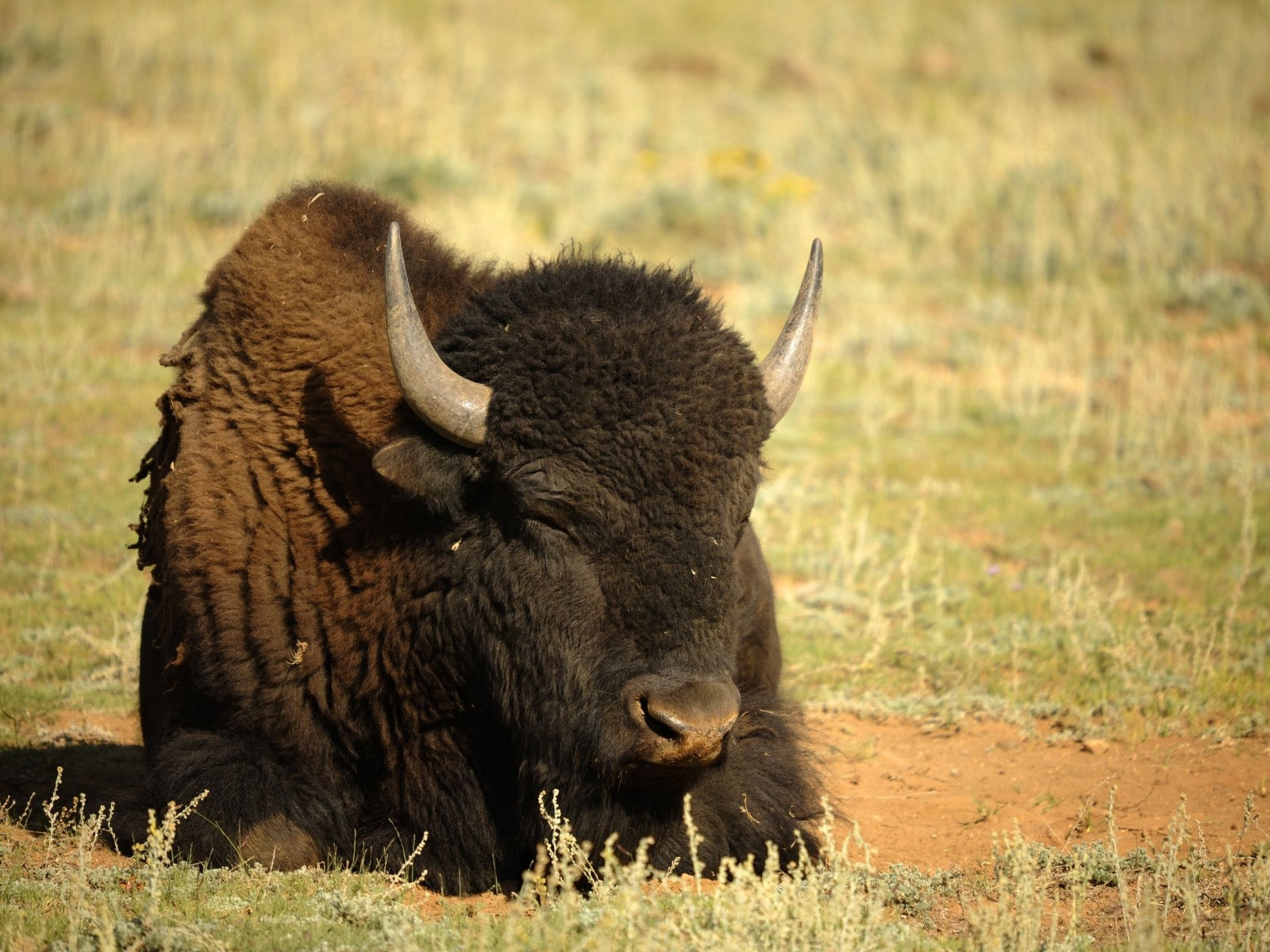
Bison Genetics: Efforts To Preserve This Keystone Species
The subject of bison genetics is an important one. Although they are closely related to cattle and the two easily interbreed, bison are genetically completely separate. For this reason, it has become a focus of preserving the integrity of this American keystone species. Genetic research has shown that the common ancestor between bison and domestic cattle split off in separate directions about two million years ago. While it’s true that some species naturally intermix and evolve together, sometimes nature gives us clues that it’s not for their long term benefit.
Also Read: Where Are They Now? Where To See American Bison

Beck & Bulow: The Conscious Meat Delivery Service
Sometimes when two species of animals create a hybrid, either the male or female offspring that are born will be infertile. This is an evolutionary indicator that the two species are incompatible. When bison and cattle interbreed, they almost always produce female offspring and on the rare occasion that male offspring are born, they are infertile.
Because of this, it’s clear that bison-cattle hybrids are not part of nature’s ultimate plan. Interbreeding the two species doesn’t help us at all with bison conservation efforts, because the offspring produced are an evolutionary dead end. One of the most effective ways to support the breeding of genetically pure bison is to buy buffalo meat online.
Also Read: Bison Tomahawk Steaks: Our Most Sought After Cut Of Meat
Amazingly, the bison have overcome all odds against their survival as a species. They have not only survived, but manage to thrive in the wild herds that are remaining as well as domestic (but typically free-range and essentially wild) herds. They may have gained this incredible resilience and adaptability from the fact that their population was once so widespread.
Before colonial times, the bison population was around 60 million. These massive numbers heralded an absolutely unparalleled level of genetic diversity. Even when forced through an evolutionary bottleneck, it seems they have been able to retain this genetic adaptability. When we support the increasing demand for bison meat, we directly create a larger population of modern day bison.
Buy Bison Meat Hand Cut By Local Butchers
To ultimately recover the wild bison, it’s necessary for us to preserve their genetics and produce as many viable offspring as possible. The more interbreeding between different herds of bison, the better. However, it really only takes as few as two bison interbreeding with another herd every 10 years to support diversity. This is currently not happening with many publicly owned herds due to misguided management practices. Some herds that have lost the most genetic diversity due to inbreeding are at risk of disappearing altogether. When we buy buffalo meat, we encourage new herds to form which is the best guarantee of longevity we can provide for the bison.

Also Read: Bison Tallow: The Impressive Health Benefits
There are inherent risks to transporting animals with the intention of breeding between herds. It’s simply a risky endeavor to transport such an enormous animal that is not used to being handled. Also, there’s the threat of the disease brucellosis. Brucellosis is devastating and causes miscarriages, infertility issues and problems with milk production. Spreading this disease between herds could easily have a very negative effect on the recovery of the wild bison. Sadly, treatment is typically not successful.
Free Range, Grass Fed New Mexican Pasture Raised Bison Meat
There are some other options on the table that are highly scientific. Considerations of in-vitro fertilization and the use of frozen bison embryos are being studied and promoted by some scientists. However, many indigenous communities as well as federal wildlife managers question the use of these unnatural tactics. The effects of altering natural mating selection patterns could have untold consequences for the evolution of the species.
As with many other situations in modern times, humans have to decide to what degree we will attempt to play God. This conundrum is one of the reasons we put all of our energy into supporting the bison by creating an increased demand for essentially wild buffalo meat.

Due to varying methods of determining genetic purity, there are differing estimates of the number of pure bison in the United States. Federal wildlife authorities report about 11,000 genetically pure bison, while other methods of testing suggest there are far more bison retaining wild genetics - as many as 75% of the total population.
Bison DNA is usually assessed by taking tail hair samples or using darts that take a small blood sample. Whatever the case, we know for certain that an increased demand for bison meat helps their population. Ours is raised essentially wild and we honor where our meat comes from. Beck & Bulow meat is hand cut by local butchers and handled with care every step of the way.
Also Read: Men’s Health And Bison Meat: How It Can Help
Buffalo Meat Delivered Straight To Your Door
One of the simplest and most effective things we can do for the bison is to increase the demand for their meat. When there’s a larger demand, more farmers will choose to raise bison. This will result in more herds in more widespread geographic locations. Most bison are raised essentially wild and have very minimal human contact.
When you order bison from us, you know that you’re not only voting with your dollar to increase demand, but also receiving meat that is carefully sourced. We take pride in the fact that our bison is the best quality available in every way. For meat delivered straight to your door, check out our selections today.
Also Read: Facts About Bison - Besides The Healthy & Delicious Meat





